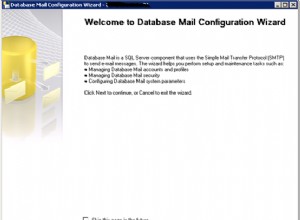Zrobiłem dokładnie to w wielu projektach
Na przykład mam relację jeden do wielu od ASPNetUsers do powiadomień. Więc w mojej klasie ApplicationUser wewnątrz IdentityModels.cs mam
public virtual ICollection<Notification> Notifications { get; set; }
Moja klasa powiadomień ma odwrotną stronę
public virtual ApplicationUser ApplicationUser { get; set; }
Domyślnie EF utworzy kaskadowe usuwanie z Notification do AspNetUsers, których nie chcę - więc mam to również w mojej klasie Context
modelBuilder.Entity<Notification>()
.HasRequired(n => n.ApplicationUser)
.WithMany(a => a.Notifications)
.HasForeignKey(n => n.ApplicationUserId)
.WillCascadeOnDelete(false);
Pamiętaj tylko, że definicja AspNetUSers jest rozszerzona w klasie ApplicationUser wewnątrz IdentityModels.cs, która jest generowana dla Ciebie przez rusztowanie Visual Studios. Następnie potraktuj ją jak każdą inną klasę/tabelę w swojej aplikacji
AKTUALIZACJA - oto przykłady pełnych modeli
public class ApplicationUser : IdentityUser
{
[StringLength(250, ErrorMessage = "About is limited to 250 characters in length.")]
public string About { get; set; }
[StringLength(250, ErrorMessage = "Name is limited to 250 characters in length.", MinimumLength=3)]
public string Name { get; set; }
public DateTime DateRegistered { get; set; }
public string ImageUrl { get; set; }
public virtual ICollection<Notification> Notifications { get; set; }
public async Task<ClaimsIdentity> GenerateUserIdentityAsync(UserManager<ApplicationUser> manager)
{
// Note the authenticationType must match the one defined in CookieAuthenticationOptions.AuthenticationType
var userIdentity = await manager.CreateIdentityAsync(this, DefaultAuthenticationTypes.ApplicationCookie);
// Add custom user claims here
return userIdentity;
}
}
public class Notification
{
public int ID { get; set; }
public int? CommentId { get; set; }
public string ApplicationUserId { get; set; }
public DateTime DateTime { get; set; }
public bool Viewed { get; set; }
public virtual ApplicationUser ApplicationUser { get; set; }
public virtual Comment Comment { get; set; }
}
}




